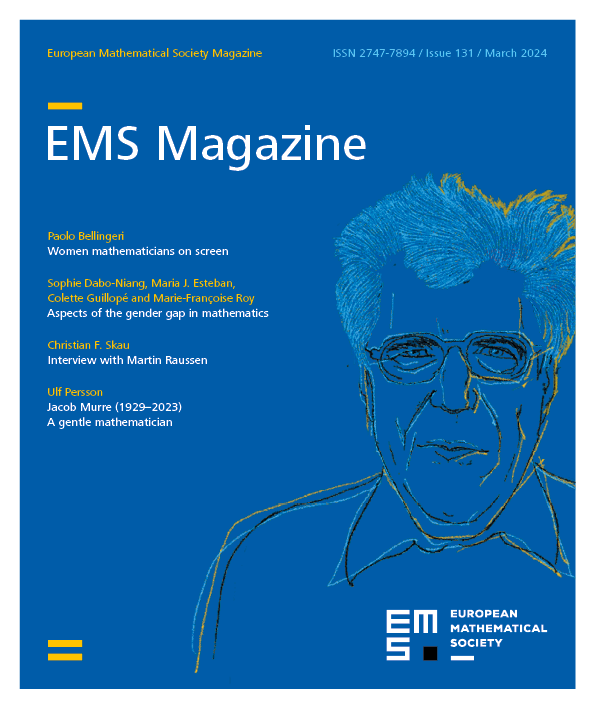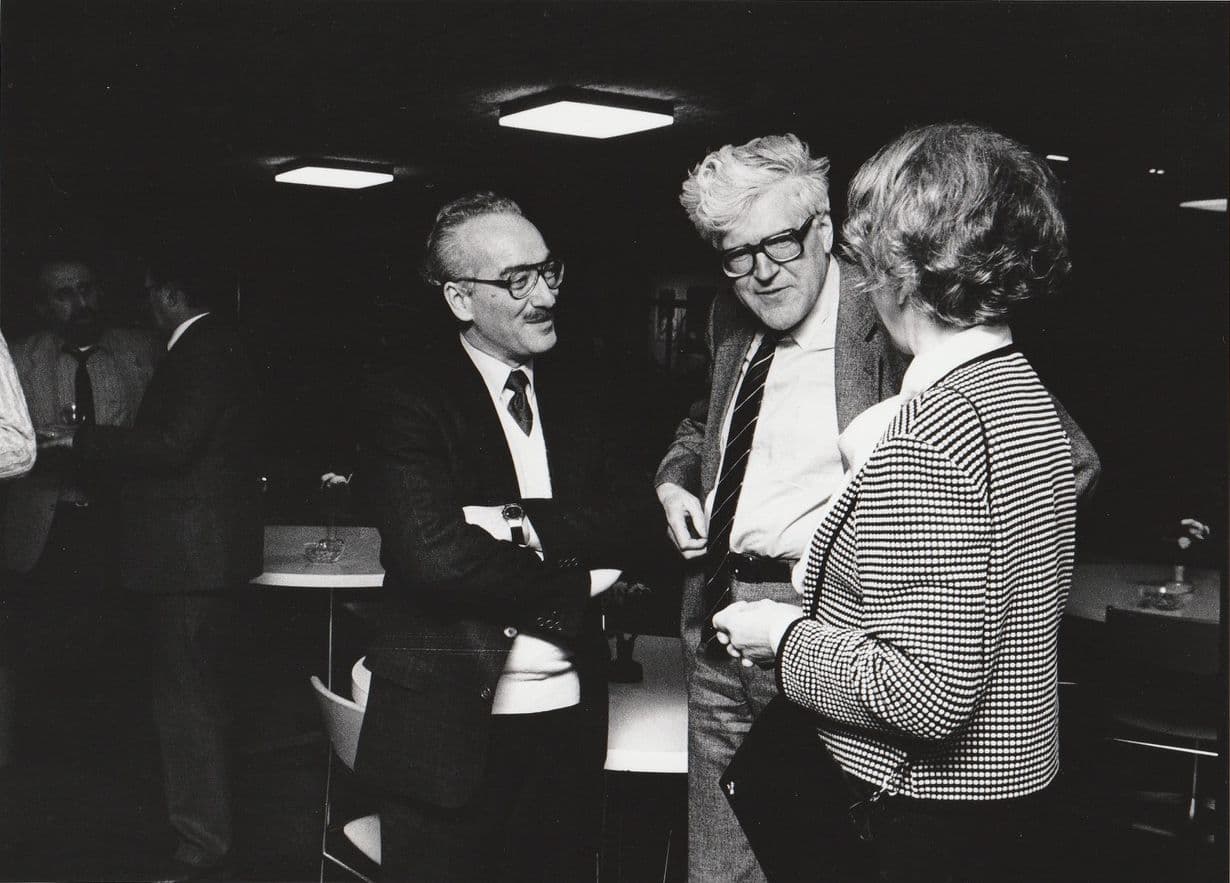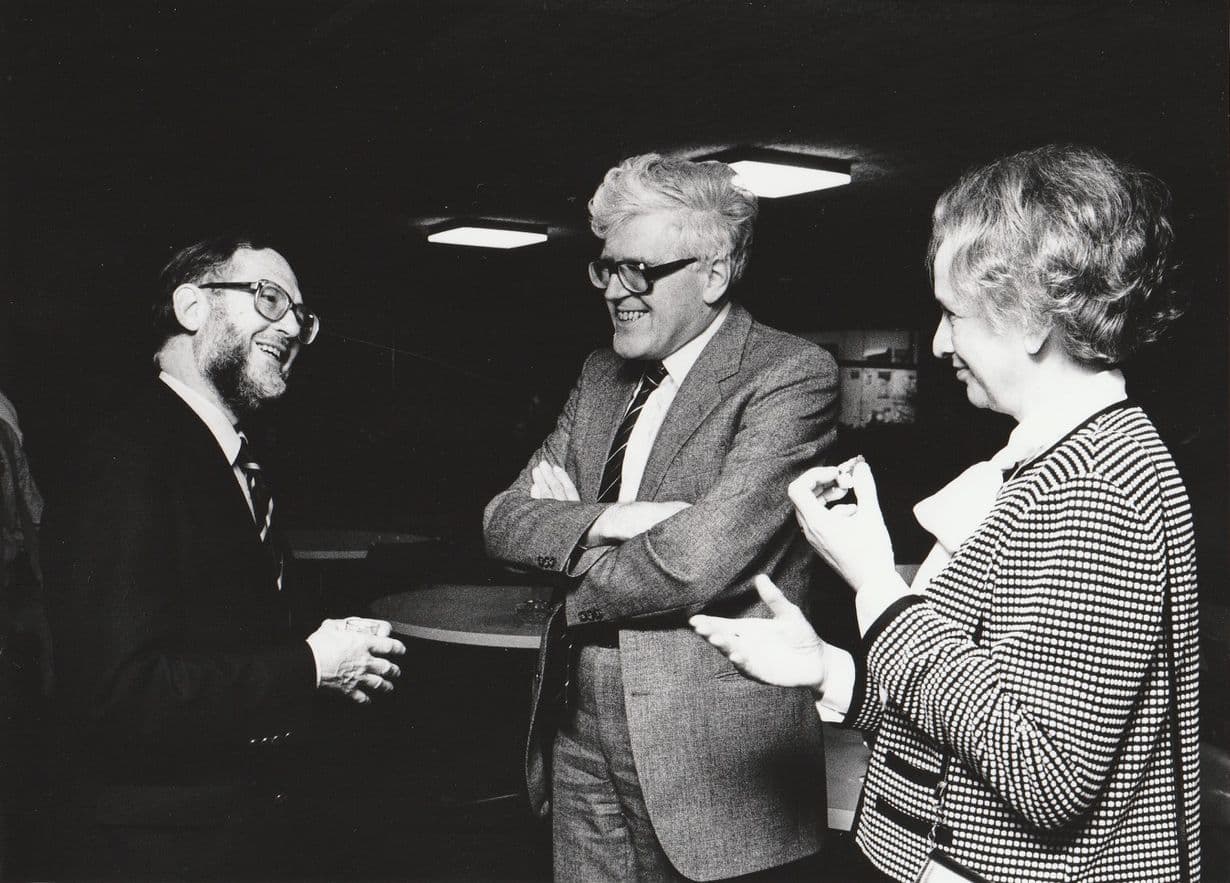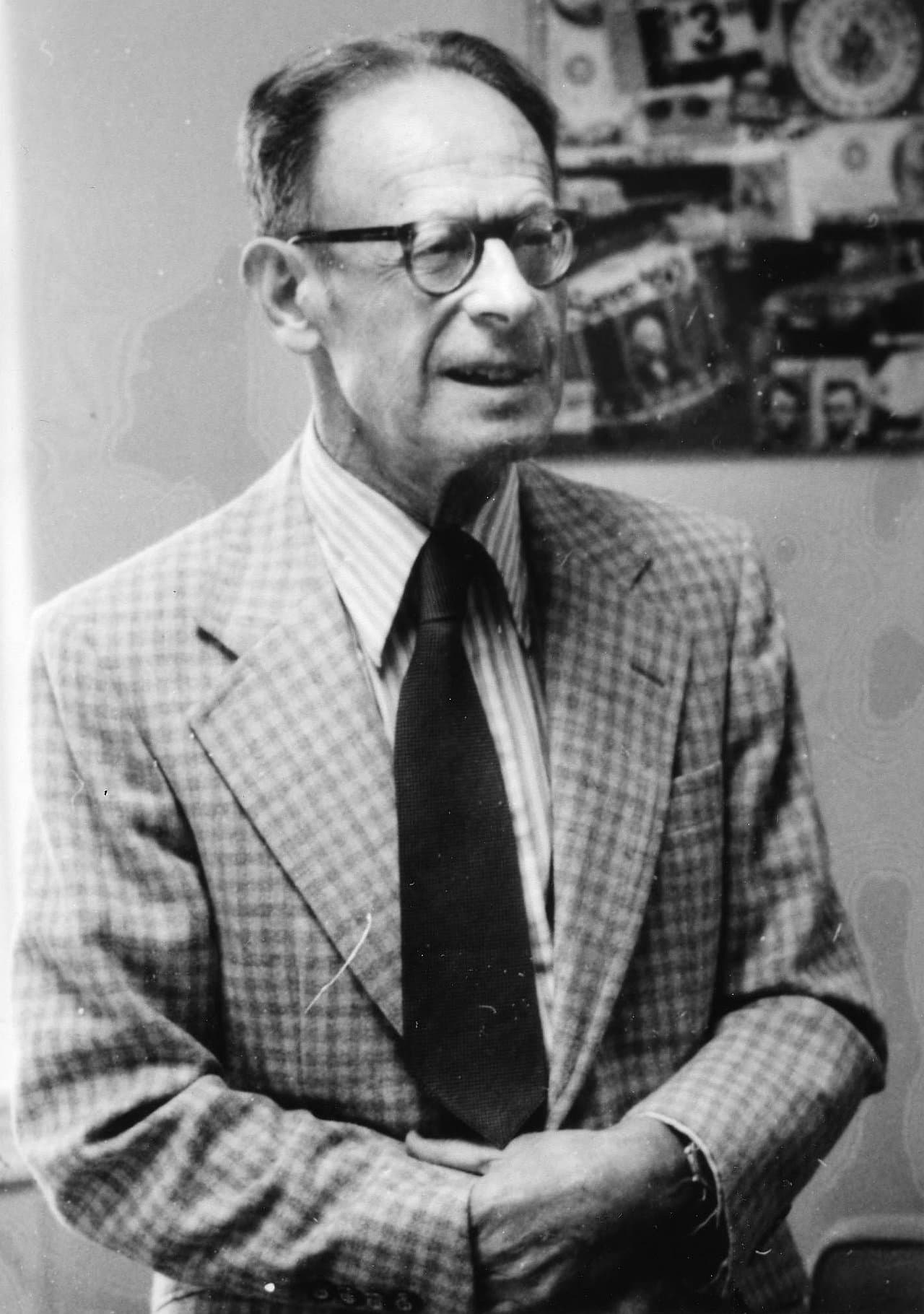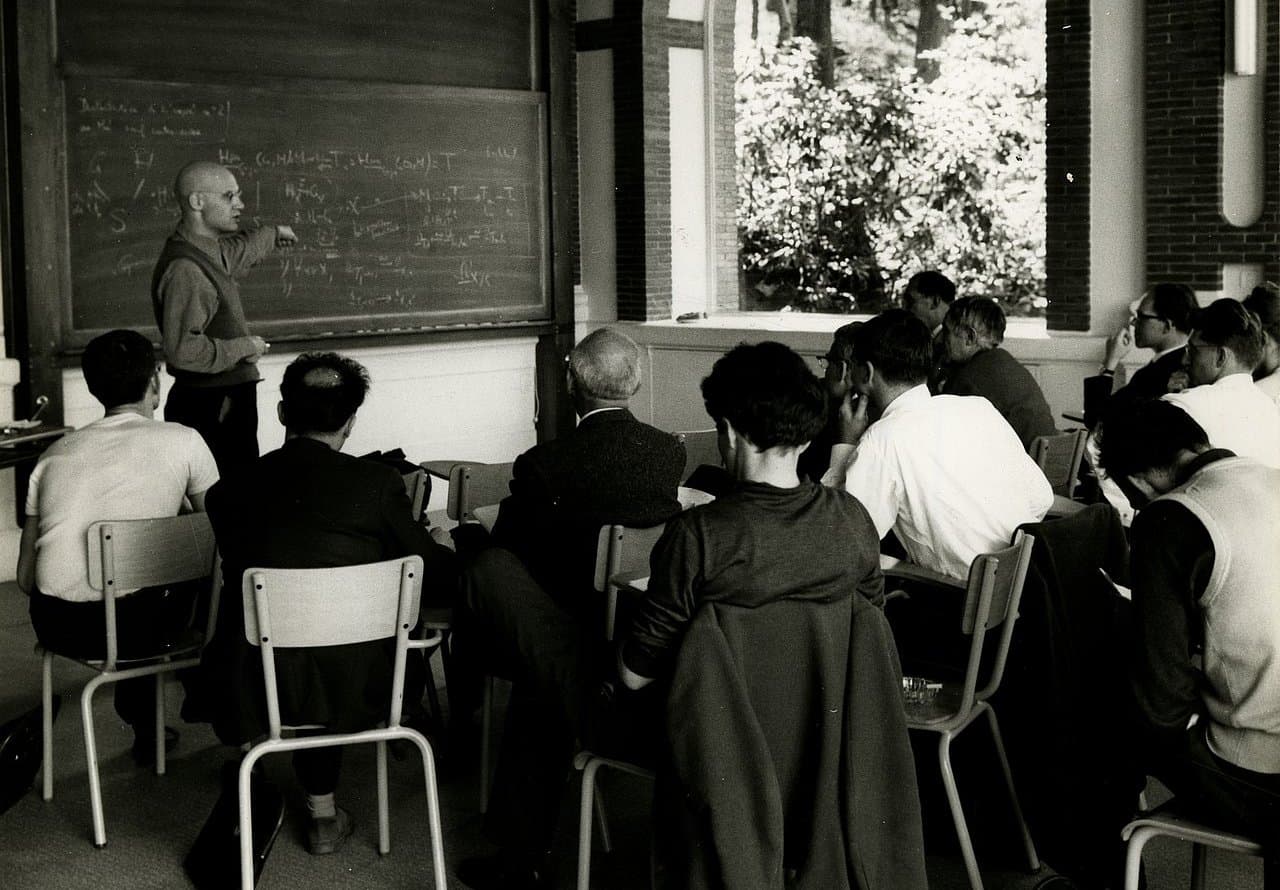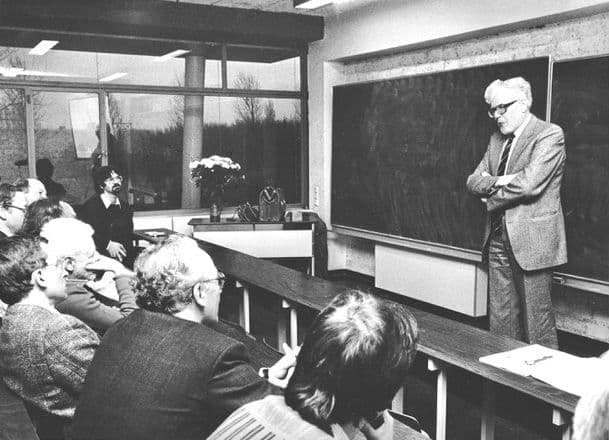I first met Jacob Murre at the fabled AMS summer school of algebraic geometry at Arcata, in the summer of 1974. It was not really a conference, but a school, part of its purpose being to instruct and inspire young upcoming mathematicians. Consequently, people were encouraged not to speak on their own work, but on that of others, in the spirit of Séminaire Bourbaki, as Mumford, one of its organizers, expressed it. But it also could be seen as the first major gathering of algebraic geometers after the voluntary retirement of Grothendieck, thus the attendance by the stars of algebraic geometry was almost complete. To refer to myself as a young upcoming mathematician would make me guilty of conceit, but I was at least a graduate student of mathematics about to enter my final year. It was the first gathering of mathematicians outside my department I encountered, and as such it would have a momentous impact on my professional life; I was not only exposed to the leading senior geometers, but maybe more importantly to the truly upcoming in my own generation. It is a well-known secret that most math lectures tend to be incomprehensible, and, as Miles Reid has noted, their purpose is often just to impress on the audience the smartness of the lecturers, and I certainly must have been exposed to a fair amount of that right then and there. So in fact the lecture I had the most lasting memory of was that given by Murre. It concerned the fairly recently established result of the cubic three-fold not being rational. True to the overall program, he was not reporting on his work, but on that of others; and I was both charmed by the contents and delighted by his very clear presentation, which was so easy to follow.1This is not actually quite true: although the theorem is of course due to Clemens and Griffiths, the algebraic presentation/proof of Murre was his own and a very first of its kind. Doing explicit geometry on the 3-fold surely revealed to me up to then unknown gems, and revived my interest in mathematics which had recently been flagging.
Murre was a tall fellow, somewhat of a giant, and given his modesty it was inevitable that he was a bit stooped. I do not recall whether his mop of hair was already white at that time, anyway he would never lose it, only its color. He spoke slowly, with, I recall, a very light lisp; but his most notable feature was his modesty. He was a genuinely kind human being, who at times carried his kindness to an almost absurd length, with the complications due to logical contradictions this inevitable entails. 2Examples of which float around in the community. If an explicit example be required, I can only in my own case on top of my head refer to the time I had sent him a photo of him, which I had printed and enlarged. He thanked me profusely and admitted that it was such a pleasant surprise, as he had thought it was just an article of mine. So that is what he thinks of my mathematics I thought, obviously not hurt at all, on the contrary, just rather amused. His accidental candor was refreshing. But of course this was not a problem at all, but just a lovable quirk, the kind of which every old-fashioned professor used to possess and actually should possess. Over the years I met him regularly at conferences, and also at the Mathematical Institute of Leiden University during the period in the early eighties when I was often visiting it. No lecture of his stood out in my memory as much as the first one I heard, but the circumstances would then be different, and he could hardly be blamed for them.
Murre did not have an academic background, in fact his father had a potato farm in the southern Netherlands. Furthermore, his schooling was disrupted by the
World War II. But he was a bright boy and his potentials were readily recognized and appreciated, as was the custom in the old times, especially his mathematical ones. Advised by his father to study engineering, he was soon lured away to pure mathematics and coming under the mentorship of Kloosterman. One thing led to another. Murre read Weil’s book Foundations of Algebraic Geometry and found there an open problem which interested him. Kloosterman, who knew Weil well, established the necessary contact and as a spinoff of the Marshall Plan, funds were supplied for a stipend, and after having attended his first ICM, which took place in Amsterdam 1954, the newly married couple took off for Chicago by boat and train. Chicago at the time was a mathematical hotbed, in addition to Weil, there were Borel, Lang, Chern, Matsusaka, Chow and temporarily Swinnerton-Dyer and Paul Cohen.
Two giants of algebraic geometry formed his future professional life. Weil, then at Chicago, as already noted, was the first; and Grothendieck at Paris, more specifically at the IHES, was the second. Weil was the first to formulate a foundation for algebraic geometry whose existence thereof had by the early forties come to be seen as sadly lacking. Murre took it seriously and spent a lot of effort to master it, only to be told by Weil himself that his efforts had been misguided; that he really should learn the language of schemes with which the young geometer Grothendieck seemed to perform miracles. You are a young man, Weil told him, and should jump on the bandwagon. 3It might be worth pointing out that this advice was not given during Murre’s first visit to Weil in Chicago, but at the Institute of Advanced Study at Princeton (to where Weil had moved) during a second trip to the US in 1960.
All rights reserved, Münchner Stadtmuseum, Sammlung Fotografie, Archiv Landshoff
It must have been very bitter for Weil to admit that and to see himself being outdone by a young man more than twenty years his junior and with whom he had strained relations to boot; but it testifies to the moral integrity of mathematicians to transcend their concerns for personal status and recognition; and I doubt that what Weil did would have been possible in many, if any, disciplines outside of mathematics. Murre himself was not so happy, it meant having to learn and master a new language; but it was after all not something entirely new. Weil’s concern with different fields of definitions foreshadowed some features of Grothendick’s approach, only that Grothendieck had carried those to their logical extremes. The really new thing Grothendieck had brought, apart from his functorial mastery, was to include nilpotents, thus ultimately the notion of schemes was born. When Murre in 1962 started to attend the seminars at IHES, he was urged by Grothendieck to embrace schemes, which he finally did, realizing that it was mathematically inevitable, e.g., as the systematic use of nilpotents made the pathological behavior of Picard functors disappear, something which impressed him a lot. He would use the new insights in computing the algebraic fundamental group of a curve by lifting from finite characteristic to zero. Something well beyond the old viewpoints. But Murre did not lose his geometrical common sense, as that talk at Arcata testified to, i.e., he did not lose his down-to-earth connection to classical geometric thinking and intuition, maybe staying true to his potato-farming upbringing? Without this firm anchoring of your feet to the ground, your head will get lost in clouds of abstractions, because true inspiration emanates from the fertility of the soil. 4It is worth pointing out that the same applied to Grothendieck as well, contrary to public appearances. Murre found that in private conversations he always revealed a concrete basis for his geometrical thinking.
All rights reserved, CSF/THALES
The collaboration with Grothendieck lasted for a long time and developed into a genuine friendship. In fact, Murre met Grothendieck for the first time already in 1955 in Kansas, during his first visit to the States, but did not speak to him. He met him properly at ICM 1958 in Edinburgh, but it was not until four years later, when he attended his seminars in Paris, that he started to talk to Grothendieck privately. Grothendieck was at the time incredibly busy with mathematics, but he had always time to talk to Murre, 5Lest anybody imagines that Murre was imposing himself, one should once again point out that he was the least likely of all mathematicians to impose himself, his modesty, as noted, being legendary. who was often invited to stay for dinner and as a consequence had to hurry to catch the last metro from Bures to Paris. At the end Murre had to witness with sadness Grothendieck’s descent into isolation, and regretted that his mathematical peers did not support him in his Survivre’ movement. Furthermore, he must have looked with puzzlement on Grothendieck’s later autobiography. Although critical, he never lost his loyalty to the man himself, the combination of which is essential to every true friendship. And besides who knows, some of Grothendieck’s outlandish ideas may one day in the future be viewed differently. In connection with Grothendieck’s death, Murre was one of those chosen to convey memories of him in the pages of the EMS Newsletter. But those were of course only the tip of an iceberg, and one hopes that a fuller selection will eventually be made and published.
Of the mathematical work of Murre I will actually say very little, apart from pointing out that his introduction into the mathematical world was on his works on connectedness and Picard varieties, in the latter of which the need for new methods was really crying out, as already remarked. It also gave him a point of entry to Weil and Grothendieck, and prepared for his main work, which concerned the theory of cycles, where he had over the years a long ongoing ‘conversation’ with Spencer Bloch, whom he incidentally met at the abovementioned summer school in Arcata. He was also influenced by Grothendieck’s vision of motives, which he tried to bring down to earth. For an excellent survey of Murre’s mathematical work I can certainly not do better than to refer to the one given by Chris Peters in the NAW. 6Nieuw Arch.Wiskd. (5) 24, 177–186 (2023)
For most of his professional life Murre worked at the Mathematical Institute at the Leiden University, where he along with his contemporary colleague, but yet so different, Antonius van de Ven (‘Jaap’ and ‘Ton’ in more intimate circles), ran algebraic geometry and set their mark on modern Dutch geometry. Murre stayed remarkably physically unchanged throughout his adult life, only slowing down at the very end. Mentally he was alert and active long beyond his ‘best due date,’ publishing, going to meetings, and never really losing his love for mathematics. His last years were saddened by the loss of relatives and old friends, and above all by the loss of his wife, with which much of his zest for life fizzled out; as incidentally was also the case of his old mentor Weil. He was felled by a short illness this past April at the age of ninety-four.
Acknowledgements. I am very much indebted to my friend Chris Peters, not only was his article on Murre very helpful to me, he also carefully read the first draft of this obituary and saved me from more than one blunder, and inspired some additional comments. For those able to decipher Dutch I recommend the transcript of the interview with Murre conducted by Chris and his wife Annie. 7https://www-fourier.univ-grenoble-alpes.fr/~peters/teachers/Interview-JM-0812.pdf
- 1
This is not actually quite true: although the theorem is of course due to Clemens and Griffiths, the algebraic presentation/proof of Murre was his own and a very first of its kind.
- 2
Examples of which float around in the community. If an explicit example be required, I can only in my own case on top of my head refer to the time I had sent him a photo of him, which I had printed and enlarged. He thanked me profusely and admitted that it was such a pleasant surprise, as he had thought it was just an article of mine. So that is what he thinks of my mathematics I thought, obviously not hurt at all, on the contrary, just rather amused. His accidental candor was refreshing.
- 3
It might be worth pointing out that this advice was not given during Murre’s first visit to Weil in Chicago, but at the Institute of Advanced Study at Princeton (to where Weil had moved) during a second trip to the US in 1960.
- 4
It is worth pointing out that the same applied to Grothendieck as well, contrary to public appearances. Murre found that in private conversations he always revealed a concrete basis for his geometrical thinking.
- 5
Lest anybody imagines that Murre was imposing himself, one should once again point out that he was the least likely of all mathematicians to impose himself, his modesty, as noted, being legendary.
- 6
Nieuw Arch.Wiskd. (5) 24, 177–186 (2023)
- 7
https://www-fourier.univ-grenoble-alpes.fr/~peters/teachers/Interview-JM-0812.pdf
Cite this article
Ulf Persson, Jacob Murre (1929–2023). Eur. Math. Soc. Mag. 131 (2024), pp. 43–45
DOI 10.4171/MAG/180